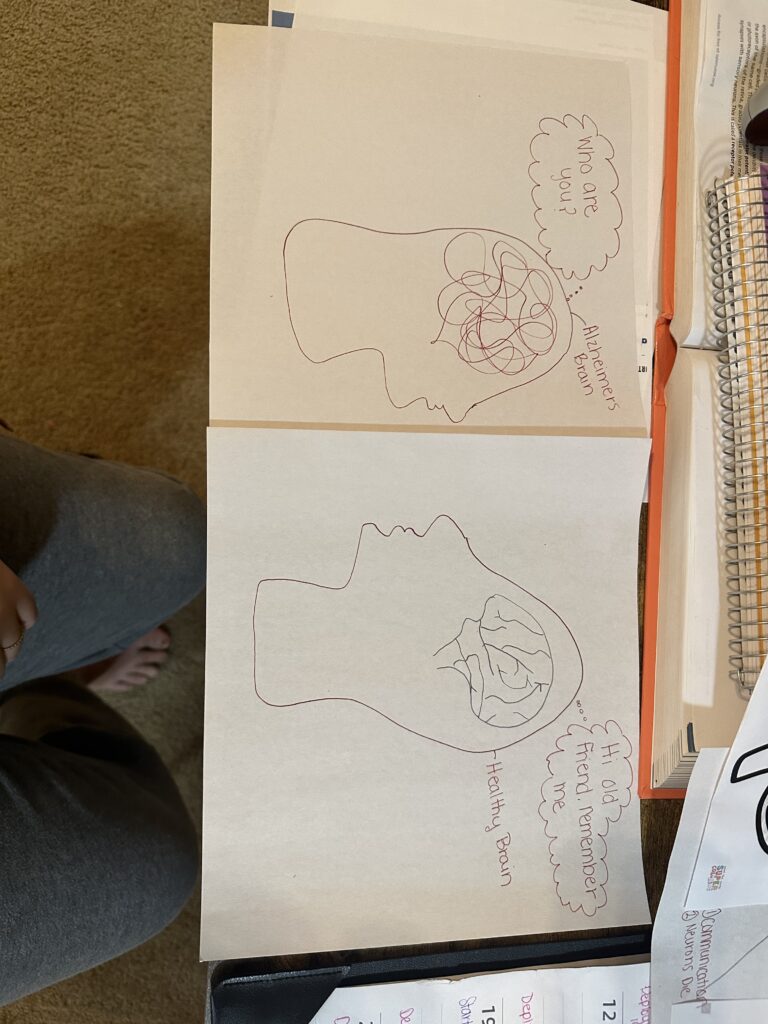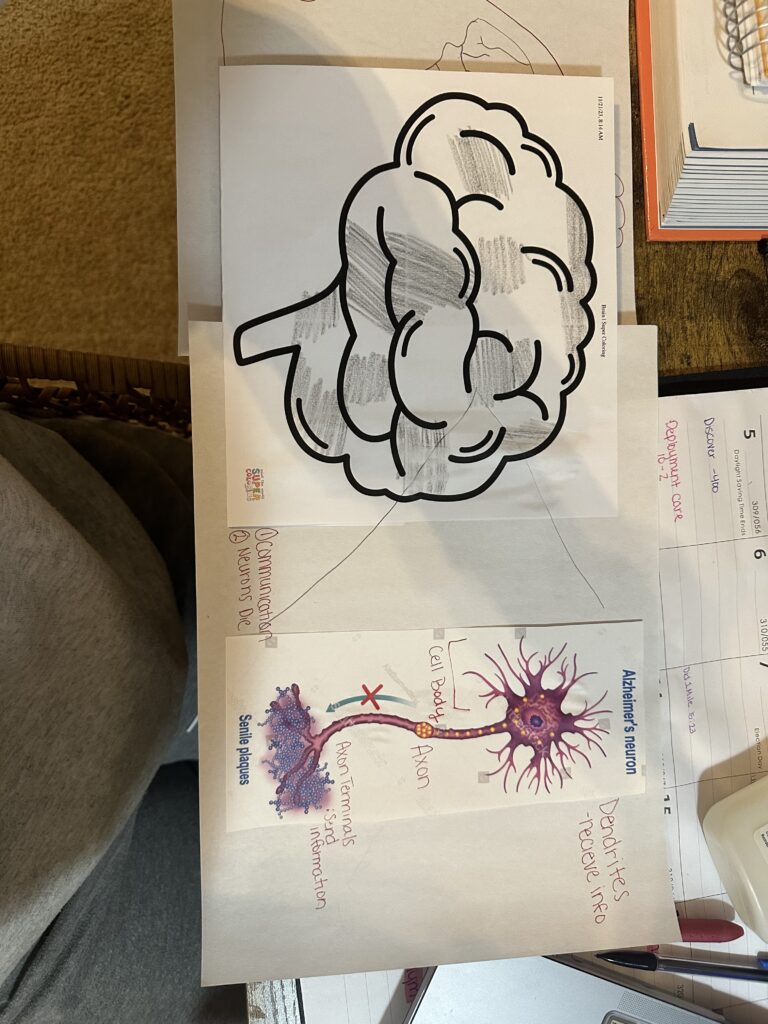Cheyanne Coglon
Human Anatomy and Physiology 1
November 17, 2023
STEAM Project
Introduction:
The objective I am focusing on for my project is how neurons carry an electrical charge. I chose to do my steam project on Alzheimer’s disease, I chose because I have worked in many different long-term memory care facilities and have watched this terrible disease take many lives. I have worked with mild and severe cases of dementia. Individuals who suffer from Alzheimer’s disease often become dependent solely on a provider to care for them entirely. Many will become aggressive and agitated until eventually, they will die from this disease.
What is Alzheimer’s Disease?
Alzheimer’s disease is the most common type of dementia and in 2020 affected 5.8 million people. Alzheimer’s is a progressive disease that begins with minimal memory loss but often leads to an individual losing their ability to talk and carry on daily activities. Alzheimer’s Disease affects the brain by disrupting the typical processes that are essential to neurons and their networks (U.S. Department of Health and Human Services, 2017). Alzheimer’s disease affects parts of the brain that control memory, language, and thoughts. Alzheimer’s disease has three stages ranging from mild to severe cases. People who experience mild symptoms of Alzheimer’s disease experience great memory loss and other cognitive difficulties. They tend to stumble on correct wording when talking, losing things easily or getting lost/wandering. Moderate Alzheimer’s disease is when damage has occurred to the brain in areas that control language, reasoning, conscious thought, and sensory processing. In this stage, individuals tend to grow more confused and have a hard time remembering and recognizing their friends and family. An individual may have a hard time learning new things on the stage or carrying out normal daily activities. They might experience hallucinations, act impulsively, and become easily agitated. When Alzheimer’s disease progresses to the severe stage plaques and tangles spread throughout the brain, and brain tissue shrinks significantly. In this stage, many will become bedridden and unable to communicate at all. This stage is also known as the end of life as the body shuts down.
How does it affect the brain?
A healthy brain contains billions of functioning neurons. Alzheimer’s disease affects the nervous system and the brain and occurs when the nerve cells in the brain die. At first, Alzheimer’s disease typically destroys neurons and their connections in parts of the brain involved in memory, including the entorhinal cortex and hippocampus. It later affects areas in the cerebral cortex responsible for language, reasoning, and social behavior. (U.S. Department of Health and Human Services, 2017). In Alzheimer’s disease, as neurons are injured and die throughout the brain, connections between networks of neurons may break down, and many brain regions begin to shrink. By the final stages of Alzheimer’s, this process—called brain atrophy—is widespread, causing significant loss of brain volume. (Breijyeh & Karaman, 2020). Alois Alzheimer noticed the presence of amyloid plaques and a massive loss of neurons while examining the brain of his first patient who suffered from memory loss and a change of personality before dying and described the condition as a serious disease of the cerebral cortex (Breijyeh & Karaman, 2020).
Treatments:
There is currently not a cure for Alzheimers disease but is under extensive research. Symptomatic treatments exist for this disease, all trying to counterbalance the neurotransmitter disturbance: 3 cholinesterase inhibitors and memantine (Yiannopoulou & Papageorgiou, 2020). There are many medications that will help reduce the symptoms such as Brexpiprazole which treats agitation among individuals with alzhimers disease.
U.S. Department of Health and Human Services. (2017). What happens to the brain in Alzheimer’s disease? National Institute on Aging. U.S. Department of Health and Human Services. (2022). What are the signs of Alzheimer’s disease? National Institute on Aging. https://www.nia.nih.gov/health/what-are-signs-alzheimers-disease
Breijyeh Z, Karaman R. (Dec 8, 2020). Comprehensive Review on Alzheimer’s Disease: Causes and Treatment. Molecules. 25(24):5789. doi: 10.3390/molecules25245789. PMID: 33302541; PMCID: PMC7764106. https://www.ncbi.nlm.nih.gov/pmc/articles/PMC7764106/
. Hampel H., Mesulam M.M., Cuello A.C., Farlow M.R., Giacobini E., Grossberg G.T., Khachaturian A.S., Vergallo A., Cavedo E., Snyder P.J., et al. The cholinergic system in the pathophysiology and treatment of Alzheimer’s disease. Brain A J. Neurol. 2018;141:1917–1933. doi: 10.1093/brain/awy132. [PMC free article
] [PubMed
] [CrossRef
]
Yiannopoulou, K. G., & Papageorgiou, S. G. (2020, February 29). Current and future treatments in alzheimer disease: An update. Journal of central nervous system disease. https://www.ncbi.nlm.nih.gov/pmc/articles/PMC7050025/



Cheyanne’s STEAM project is put together perfectly. She mainly informs and explains the main topic of neurons carrying an electric charge and how this relates and affects humans diagnosed with Alzheimer’s disease. She explains the stages and extremities of patients who suffer from Alzheimer’s as well as this disease destroying parts of the brain. These parts include the entorhinal cortex, hippocampus and areas in the cerebral cortex. Unfortunately there is no cure for Alzheimer’s, but hopefully there is soon<3 (5.8 MILLION people in one year is actually crazy scary:( )